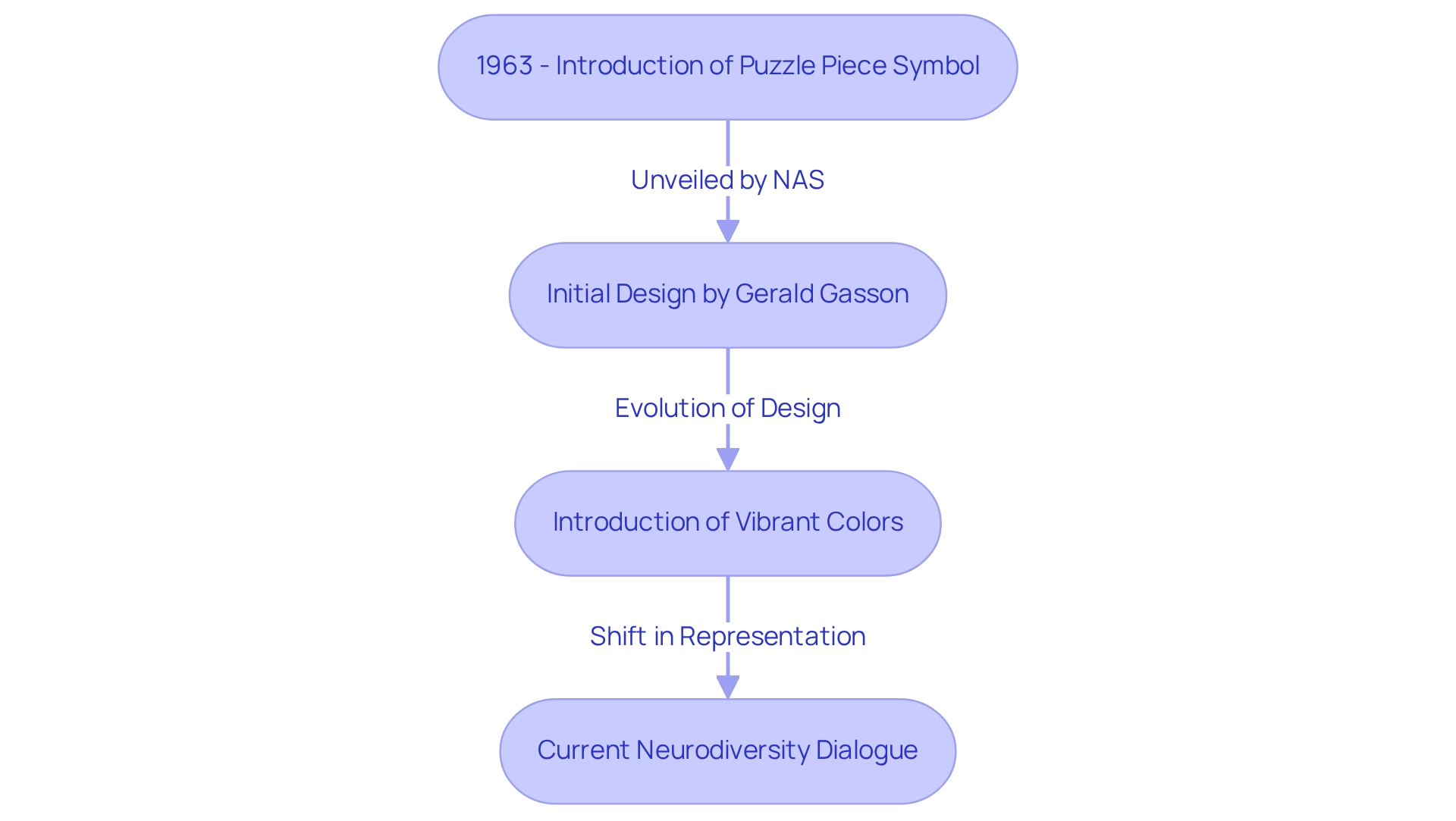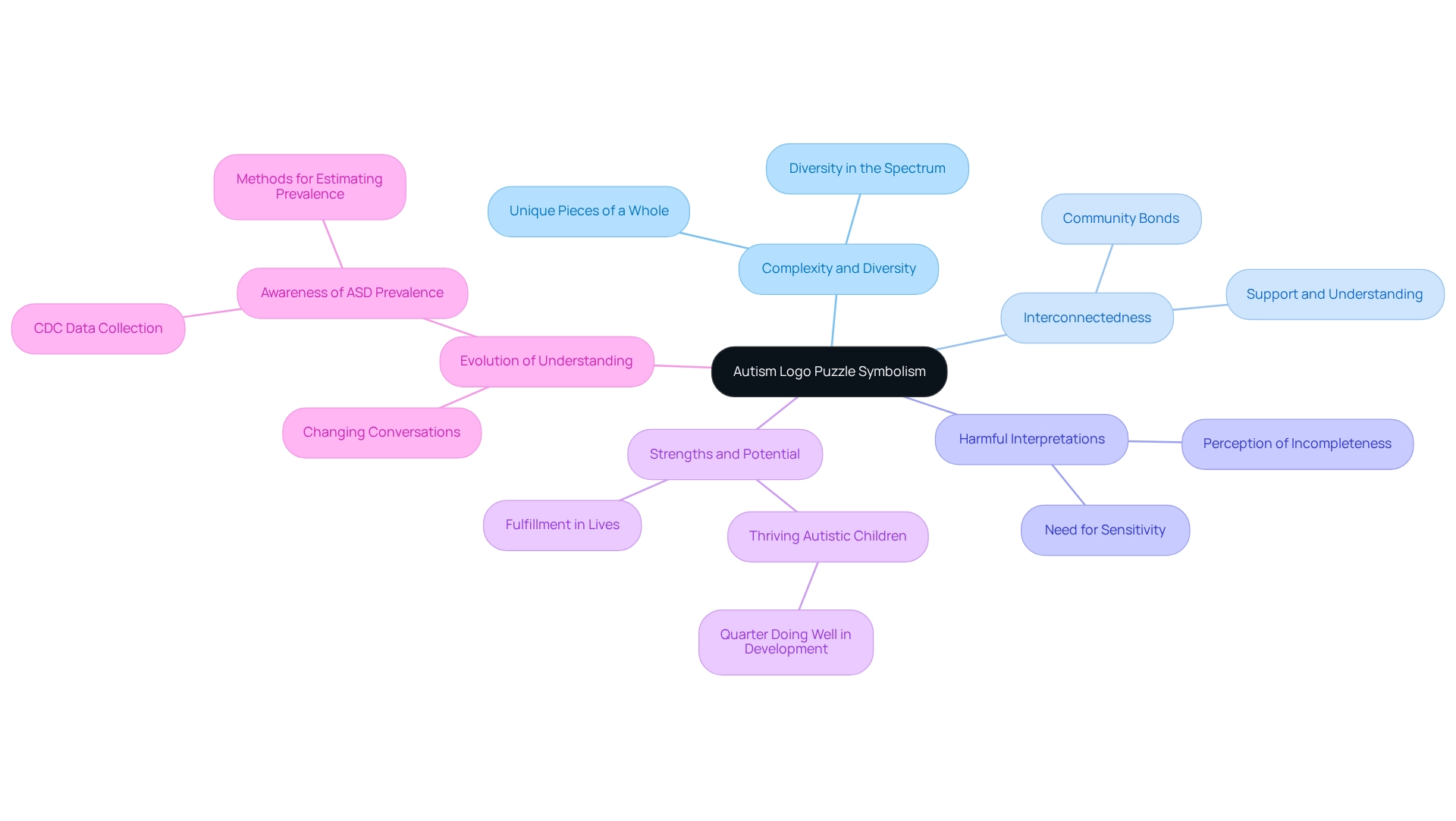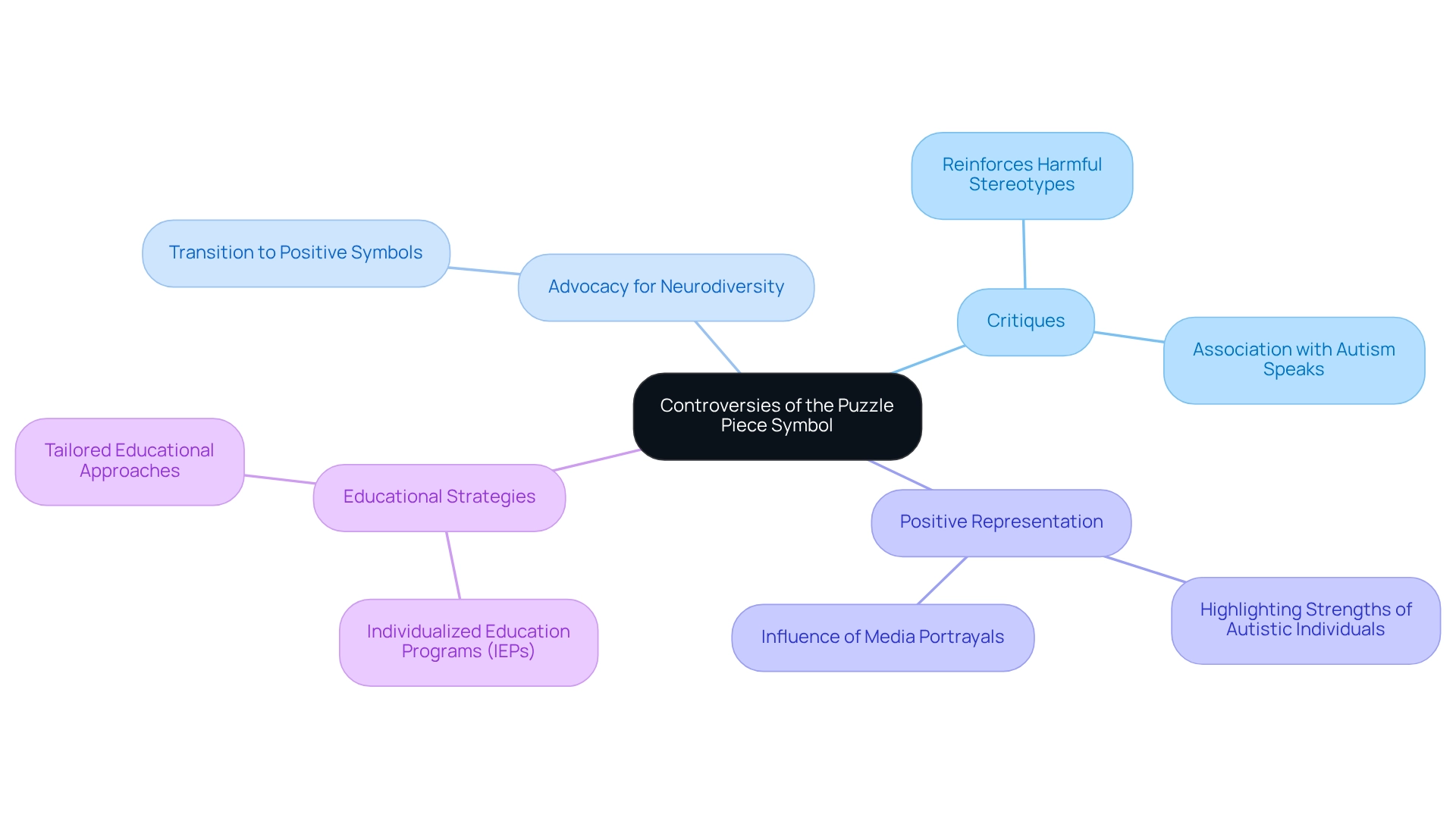Overview
This article delves into the journey of the autism logo puzzle, tracing its history, significance, and the controversies it has sparked. Initially a symbol of sorrow, it has evolved to represent the rich diversity and complexity of the autism spectrum. However, this transformation is not without its challenges. The ongoing debate surrounding the puzzle piece highlights the concerns many advocates have, as they seek alternative symbols that celebrate neurodiversity. The puzzle piece is often perceived as reinforcing negative stereotypes about autistic individuals, prompting a call for change.
As we explore these themes, it’s essential to consider the feelings and experiences of those affected. Many parents may find themselves grappling with the implications of this symbol. How does it reflect their child's journey? What does it mean for their understanding of autism? Sharing stories and insights can help illuminate the challenges faced by families, fostering a deeper connection to the topic.
In this light, we encourage readers to reflect on their own experiences and share them in the comments or through our newsletter. By fostering open conversations, we can collectively seek symbols that truly honor the spirit of neurodiversity and the unique experiences of autistic individuals. Together, let’s advocate for a representation that uplifts and celebrates every facet of the autism spectrum.
Introduction
The autism puzzle piece symbol, introduced in 1963, has become a powerful yet contentious emblem within the autism community. Initially designed to raise awareness about the challenges faced by autistic individuals and their families, its meaning has evolved over the decades, sparking diverse interpretations and debates.
Some view the puzzle piece as a representation of the unique complexities of autism, while others see it as a symbol of incompleteness or a problem to be solved. As society increasingly embraces neurodiversity, alternative symbols like the infinity sign are gaining traction, reflecting a broader cultural movement towards inclusivity and empowerment.
This article invites you to explore the historical origins, varied meanings, and ongoing controversies surrounding the puzzle piece symbol. Together, we will examine the evolving landscape of autism representation and advocacy, fostering a deeper understanding and connection to this important topic.
Explore the Historical Origins of the Autism Puzzle Piece Symbol
The autism logo puzzle, which represents autism, was first unveiled in 1963 by the National Autistic Society (NAS) in the United Kingdom. Designed by Gerald Gasson, a dedicated board member of the NAS, the initial autism logo puzzle depicted a weeping child superimposed on a puzzle piece, representing the sorrow and challenges that families often face. This poignant design aimed to raise awareness about developmental disorders and the emotional hurdles encountered by loved ones.
Over the decades, this emblem has undergone significant transformation. Its colors have become more vibrant, and the imagery now reflects a broader spectrum of experiences related to autism. T-McK notes that the bright colors were 'intended to represent the hope of access to early interventions,' a goal that resonates deeply with many parents of autistic children. Despite these changes, the foundational idea represented by the autism logo puzzle has sparked varied interpretations, underscoring the need for a deeper exploration of its implications.
Consider this: a statistic reveals that 67.1% of mothers of autistic children in Chang Sha, China, reported experiencing both depression and anxiety symptoms. This highlights the emotional challenges that families face daily. The current dialogue surrounding neurodiversity representation is evolving towards symbols that encourage inclusiveness and empowerment, as illustrated in the case study titled 'The Future of Neurodiversity Advocacy and Representation.' This movement strives to create a more supportive community that acknowledges and honors the diverse experiences of individuals with autism-related conditions.
Moreover, the differing priorities of mothers and fathers regarding developmental disorders enrich the conversation surrounding the puzzle piece representation. This evolution emphasizes the importance of awareness campaigns, such as those featuring the autism logo puzzle, from 1963 to today, which have been instrumental in shaping public perception and advocacy efforts. Together, let us continue to foster understanding and support for all families navigating the unique journey of autism.

Analyze the Meanings and Interpretations of the Puzzle Piece Symbol
The autism logo puzzle, symbolized by the jigsaw fragment, has drawn various interpretations within the neurodiversity community, captivating many. For numerous individuals, the autism logo puzzle signifies the complexity and diversity inherent in the spectrum, suggesting that each person represents a unique piece of a larger whole. The interlocking nature of the autism logo puzzle beautifully symbolizes the interconnectedness of the community, highlighting the importance of support and understanding among its members.
However, a significant portion of the autistic population perceives the autism logo puzzle's jigsaw fragment as a harmful depiction, implying that individuals with this condition are 'incomplete' or 'lacking' something essential. This duality in interpretation underscores the need for sensitivity and awareness when using the autism logo puzzle as a form of representation.
It's crucial to understand these perspectives, especially when considering that nearly a quarter of school-age autistic children are thriving across all developmental areas. This showcases the potential and strengths within the community, confronting the negative implications associated with the autism logo puzzle and reinforcing the idea that individuals on the spectrum can lead fulfilling lives.
As conversations about awareness of neurodevelopmental conditions evolve, so too does our understanding of symbols like the autism logo puzzle. This evolution mirrors the ongoing dialogue about identity, representation, and advocacy within the spectrum of these conditions.
Moreover, grasping trends in ASD prevalence is vital for addressing the needs of affected children and families, shaping perceptions and awareness within the community. The CDC's special education child count data, collected from over 5 million children annually between 2000 and 2022, highlights the diversity and complexity of autism, which is symbolized by the autism logo puzzle, enriching our examination of this emblem.
Let's continue to foster understanding and support for all individuals on the spectrum.

Examine the Controversies and Criticisms of the Puzzle Piece Symbol
The autism logo puzzle piece emblem has faced significant scrutiny, especially from autistic advocates who argue that it reinforces harmful stereotypes. Critics express concern that the autism logo puzzle representation suggests that autistic individuals are 'puzzles' to be solved, implying they are broken or in need of repair. This viewpoint is further complicated by its association with organizations like Autism Speaks, which many within the autistic community believe perpetuates a negative narrative about the autism logo puzzle. In response, a growing movement is advocating for the abandonment of the autism logo puzzle piece in favor of more affirming representations that celebrate neurodiversity.
This transition is crucial, especially considering that nearly a quarter of school-age autistic children are thriving across all developmental aspects. It underscores the importance of representations that highlight their strengths rather than their perceived weaknesses. As Paula Jessop, a former autistic consultant at Altogether Autism, aptly stated, "It’s time to transition to awareness of neurodiversity, as well as discarding icons from a past that was unkind to individuals on the spectrum." This heartfelt appeal for transformation is echoed by advocates who emphasize the significance of positive representation in media and imagery, as negative portrayals can profoundly influence public perception and understanding of autism.
Moreover, tailored educational strategies, such as Individualized Education Programs (IEPs), play a vital role in fostering academic success and addressing the unique needs of autistic learners. This highlights the positive outcomes that should be central to conversations about autism, advocating for a more compassionate and informed approach.

Understand the Shift to Alternative Symbols: Embracing Neurodiversity
In recent years, a heartening shift has emerged towards alternative icons that embrace neurodiversity. The infinity sign, often depicted in vibrant rainbow colors, has gained popularity as a symbol of acceptance and celebration of the unique qualities of autistic individuals. This sign beautifully represents the infinite diversity and possibilities within the autism spectrum. Unlike the traditional autism logo puzzle piece, which has drawn criticism for its negative associations, the infinity design reflects a broader cultural movement towards inclusivity and recognition of the strengths inherent in neurodiversity.
As parents navigate the complexities of treatment options, including ABA therapy—which averages $175.44 per session—they increasingly seek representations that resonate with their experiences and aspirations for their children. This transition is not merely symbolic; it is backed by expert opinions and case studies. For instance, one study highlights how targeted interventions in occupational therapy empower children to gain independence and confidence in their daily activities.
A recent study reinforces this perspective, stating, "doing well is possible even when a child continues to meet the criteria for ASD," emphasizing that positive outcomes are indeed achievable. The growing recognition of neurodiversity icons within the autistic community signifies a collective effort towards more inclusive representation, fostering a sense of belonging and support among families and advocates alike. This shift reflects not only a change in symbols but also a deeper understanding of the diverse needs and strengths of individuals on the autism spectrum. Together, we can continue to promote this understanding and support one another on this journey.
Conclusion
The evolution of the autism puzzle piece symbol reflects a rich tapestry of history, interpretation, and advocacy within the autism community. Originally designed to raise awareness about the challenges faced by autistic individuals and their families, this symbol has undergone significant transformation over the decades, attracting both support and criticism. For many, it embodies the unique complexities of autism; however, others contend that it suggests a sense of incompleteness, igniting essential conversations about identity and representation.
The controversies surrounding the puzzle piece have led to a meaningful shift toward alternative symbols that embrace neurodiversity, such as the infinity symbol. This new emblem captures a broader cultural movement towards inclusivity and empowerment, celebrating the strengths and possibilities inherent within the autism spectrum. As our understanding of autism continues to evolve, so too does the necessity for symbols that genuinely reflect the diverse experiences of individuals and families touched by autism.
Ultimately, the ongoing dialogue about the puzzle piece symbol serves as a poignant reminder of the importance of sensitivity and awareness in autism advocacy. By cultivating an environment that prioritizes positive representation and champions neurodiversity, we can collectively strive towards a more inclusive and supportive world for all individuals on the autism spectrum. Embracing these changes not only enriches the conversation around autism but also empowers those who navigate its complexities each day.
Frequently Asked Questions
When was the autism logo puzzle first unveiled and by whom?
The autism logo puzzle was first unveiled in 1963 by the National Autistic Society (NAS) in the United Kingdom.
Who designed the original autism logo puzzle and what did it depict?
The original autism logo puzzle was designed by Gerald Gasson, a board member of the NAS, and it depicted a weeping child superimposed on a puzzle piece, representing the sorrow and challenges faced by families.
How has the autism logo puzzle changed over the decades?
Over the decades, the autism logo puzzle has undergone significant transformation, with more vibrant colors and imagery that reflects a broader spectrum of experiences related to autism.
What do the bright colors in the current autism logo puzzle represent?
The bright colors in the current autism logo puzzle are intended to represent the hope of access to early interventions for autistic children.
What statistic highlights the emotional challenges faced by families of autistic children?
A statistic reveals that 67.1% of mothers of autistic children in Chang Sha, China, reported experiencing both depression and anxiety symptoms, highlighting the emotional challenges families face daily.
How is the dialogue surrounding neurodiversity representation evolving?
The dialogue surrounding neurodiversity representation is evolving towards symbols that encourage inclusiveness and empowerment, aiming to create a more supportive community that acknowledges the diverse experiences of individuals with autism-related conditions.
What role do awareness campaigns play in the context of the autism logo puzzle?
Awareness campaigns featuring the autism logo puzzle have been instrumental in shaping public perception and advocacy efforts regarding autism from 1963 to today.
What does the evolving representation of the autism puzzle piece symbolize?
The evolving representation of the autism puzzle piece emphasizes the differing priorities of mothers and fathers regarding developmental disorders and highlights the importance of fostering understanding and support for families navigating the journey of autism.




